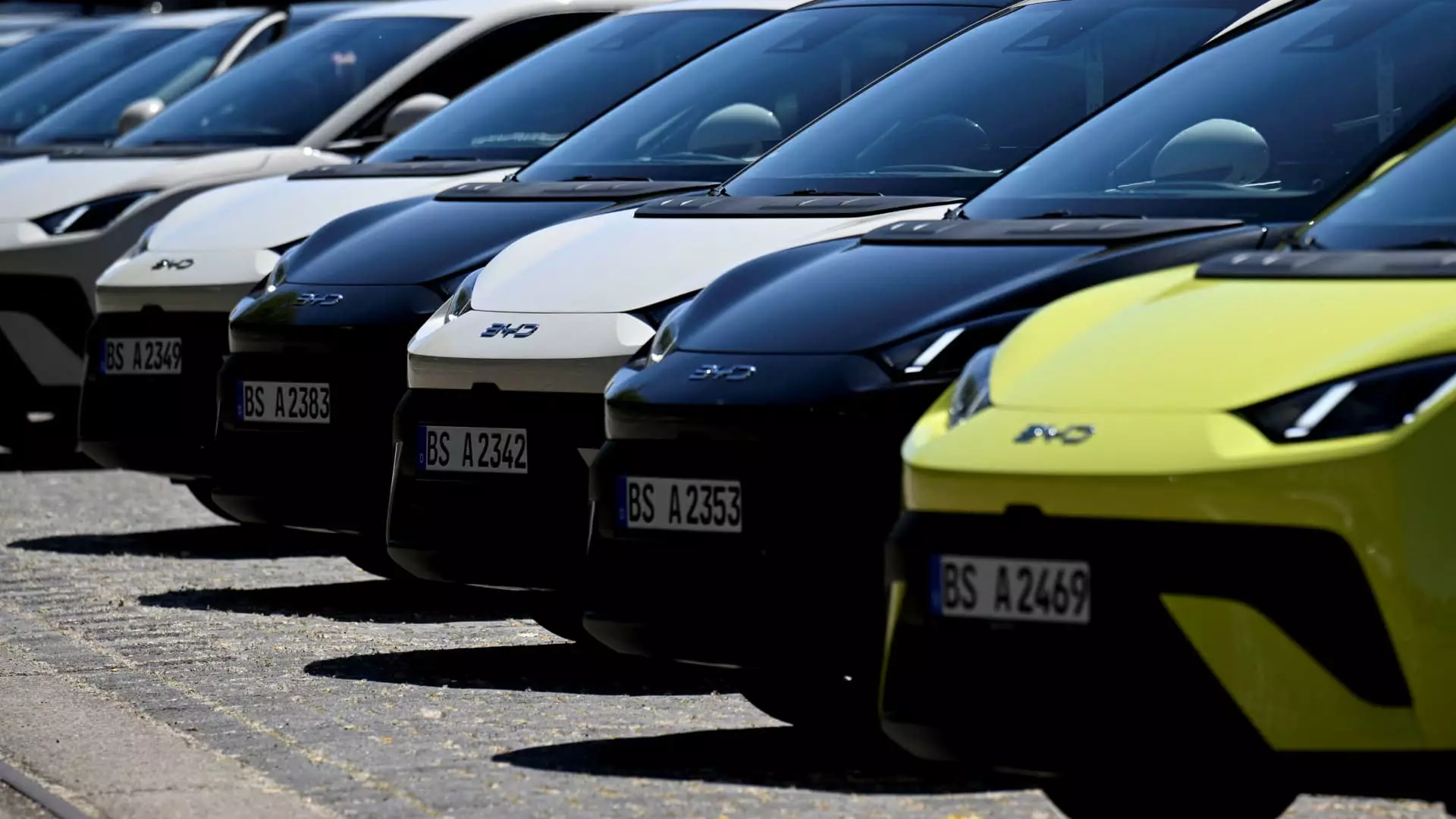The electric vehicle (EV) landscape in China is evolving rapidly, and the recent price war has significant implications for industry stability and survival. Companies are bracing for intense competition, evidenced by Tesla’s notable 15% drop in sales in May compared to the prior year. Such figures paint a stark picture of the challenges even market leaders face when the tide of consumer preference shifts or when competition intensifies. Tesla, once seen as an unassailable titan, now grapples with declining sales figures while its rivals, particularly BYD, hold their ground.
BYD enjoys its position as a dominant player in China’s EV sector, recording a 14% year-on-year sales increase. However, the company is not immune to the pressures of the market. Reports indicate that they are forced to implement aggressive discounting to maintain their competitive edge. The disparity in performance highlights a key lesson in the current business climate: even leaders can falter under pressure if they fail to innovate quickly or align with changing consumer demands.
Analysts Weigh In: Dissecting Competitive Dynamics
The consensus among analysts suggests that further price competition is likely on the horizon. CLSA’s analyst Xiao Feng predicts that BYD is still not meeting its ambitious sales targets, placing it in a position where price cuts could become a necessary evil. In such a cutthroat environment, Geely stands out by maintaining an “optimal balance” between internal structures and competitive pricing. Analysts from Macquarie even suggest that Geely’s Galaxy NEV brand is making impressive strides in targeting BYD’s popular models—an essential tactic for survival in this relentless pricing war.
It’s important to observe how rapidly evolving consumer preferences impact manufacturers of all sizes. Electing to cut prices without sacrificing quality or brand equity will be a considerable challenge. This climate not only pressures established companies like BYD and Tesla but also opens doors for nimble startups like Xpeng, which is gaining market traction through innovative technological advancements and effective pricing strategies.
The Promise of Innovation Amidst Chaos
Xpeng’s strategic moves position it as a noteworthy contender in the current marketplace. With a focus on advanced driver assistance systems and an exciting range of future car models, Xpeng is aligning itself for potential market share gains—this adaptability should be on every industry watcher’s radar. Their recent achievement of delivering over 30,000 vehicles in May signals a robust demand that bodes well for the company’s growth trajectory.
As one examines the data, it’s evident that there is also a significant dichotomy among newer entrants like Leapmotor and Li Auto. The latter has maintained profitability even in a tumultuous market, showcasing a sound management strategy. Li Auto’s decision to offer an innovative lineup of SUVs that include a gas tank to extend range provides a competitive edge, allowing it to sidestep some of the perilous pricing battles that other mid-range competitors are entangled in.
Global Perspectives: The Impact of Overproduction and Tariffs
Yet, on a broader scale, concerns loom regarding an oversupply of vehicles. The production capacity currently exceeds a staggering 50 million units, while annual wholesale figures hover around 25 million to 27 million. This imbalance is unsustainable and foreshadows a potential market correction—whether through increased demand or necessary consolidation of manufacturers. Even international perspectives reveal a hesitation among European investors, who are concerned about an influx of cheap Chinese vehicles triggering tariff increases.
The crisis is exacerbated by the recent commentary from industry officials, who have begun to voice alarms about excessive market competition. What remains to be seen is whether a pragmatic approach will emerge as companies scale back on aggressive pricing strategies in favor of brand-building and product differentiation.
Strategic Expansion as a Buffer Against Competition
For giants like BYD, the road ahead is lined with both challenges and opportunities. Analysts express cautious optimism regarding BYD’s overseas strategy, forecasting a significant contribution to the firm’s earnings from international markets and premium brands by 2025. This expansion not only provides a potential buffer against domestic competition but also fortifies the brand’s presence on the global stage.
The willingness to explore international markets can be a game-changer. Amidst the clamor of price wars, BYD’s capacity to cultivate its premium offerings could allow it to tap into a consumer base less sensitive to price and more focused on quality and innovation. While the challenges are real, the prevailing energy amid competition could spur essential advancements in electric vehicle technology and infrastructure—ultimately benefiting consumers worldwide.
The intricate dynamics of China’s EV market reveal a deeply competitive landscape shaped by innovation, consumer behavior, and economic forces. As we witness the unfolding of this saga, the outcomes will likely have lasting implications, not just for the companies involved but for the global automotive industry as a whole.

